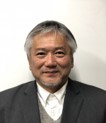- JST Home
- /
- Strategic Basic Research Programs
- /
 PRESTO
PRESTO- /
- Research Area/Projects/
- Area/
- [Innovative Optics and Photonics] Creating State-of-the-Art Science by Innovative Optics and Photonics
[Innovative Optics and Photonics] Creating State-of-the-Art Science by Innovative Optics and Photonics
Strategic Objective
Innovative fundamental technologies based on state-of-the-art photon science and technology
Research Supervisor

Koichiro Tanaka (Center Director, Center for Advanced Photonics, RIKEN)
Overview
Optics and photonics have been contributing significantly to the development of science. The knowledge on the spectroscopy of atoms gave birth to quantum mechanics, which developed to semiconductor physics, supporting the platform of solid state spectroscopy, followed by quantum optics. The invention of the laser was a big milestone in the field of optical science, which today has become a fundamental technology for supporting several scientific fields and has led to infinite applications and developments, as represented by optical communication and recording. Thus, optics and photonics have been contributing to the academia and society, while the evolution of optics and photonics has been significant, resulting in a virtuous circle. Here, note that the dreams and ideals of the researchers who pursue new development in various scientific fields can be a strong motivation for generating new optics and photonics. The mindset to pursue the unfulfilled quest of the life science researchers, I want to see the inside of the cells in the special resolution as high as possible, has been driving the development of the technologies of high-resolution optical microscopes. Recently, as non-linear optics have involved, new fluorescent dyes are developed and the resolution by far overcomes the limitations in diffraction. The detection of the gravitational wave as predicted by Einstein in his theory of relativity used to be a dream of physicists, which has recently been accomplished with the development of the long-baseline laser interferometer. The technology to stabilize lasers and interferometers, which is necessary for long-term observation of the gravity wave, has developed optical science extensively. There is no limit to such examples.
In this research area, we will develop innovative optics and photonics that have not yet been researched and will promote a challenging research environment that can cultivate a new phase of various scientific fields. In the course of such processes, we will try to create the fundamental optics and photonics that can be applied to various fields in the future.
Research Area Advisors
| Hajime Ishihara | Professor, Graduate school of Engineering Science, Osaka University |
| Shinichiro Iwai | Professor, Graduate School of Science, Tohoku University |
| Keiichi Edamatsu | Emeritus Professor, Tohoku University |
| Mikako Ogawa | Professor, Faculty of Pharmaceutical Sciences, Hokkaido University |
| Shinya Koshihara | Professor, School of Science, Institute of Science Tokyo |
| Ryo Shimano | Professor, Cryogenic Research Center, The University of Tokyo |
| Toshinori Suzuki | Professor, Graduate School of Science, Kyoto University |
| Takashi Nakano | Director, Research Center for Nuclear Physics, Osaka University |
| Kazuhiko Misawa | Vice-President, Chief Academic Officer, Tokyo University of Agriculture and Technology |
| Junji Yumoto | Project Professor, The University of Tokyo |













